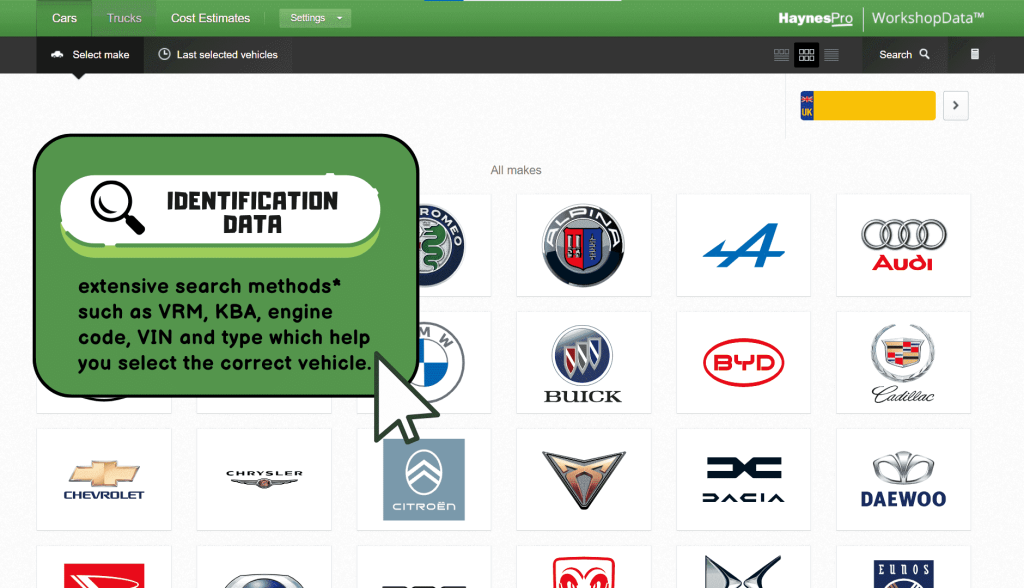The automotive industry is undergoing significant transformation, and one of the most notable changes is the emergence of car subscription services. These services, which allow consumers to access a fleet of vehicles for a monthly fee, are reshaping how people own and use cars. Moving away from traditional models of purchasing or leasing, this new approach offers flexibility, simplicity, and convenience.
The subscription model, popularized by services like Netflix and Spotify in the entertainment sector, is now expanding into industries like automotive. But why is this model gaining so much popularity, and how might it reshape mobility in the future?
What is a car subscription service?
A car subscription service allows users to drive multiple car models for a fixed monthly fee. Depending on the chosen subscription plan, users have access to a range of vehicles, from compact city cars to family SUVs, and even luxury vehicles. Unlike purchasing a car, the subscriber can switch vehicles at any time, based on their needs. This means someone can drive a different car each month without worrying about maintenance, insurance, or the administrative tasks typically associated with car ownership.
Why is the car subscription model expanding?
- Flexibility and adaptability
One of the key advantages of car subscription services is their flexibility. Unlike car ownership, which often requires a multi-year commitment, subscriptions allow users to switch vehicles based on their needs. For instance, a family may use a spacious SUV for summer holidays and switch to a small, fuel-efficient car for daily commuting. This flexibility allows individuals to better adapt to changing lifestyles and preferences.
- Reduced financial burdens
Owning a car comes with hidden costs: maintenance, repairs, insurance, taxes, and depreciation. With car subscription services, these costs are consolidated into a single, predictable monthly payment. Additionally, users don’t have to worry about the initial purchase or eventual resale of the vehicle. Unexpected expenses are also avoided, as maintenance is included in the subscription.
- Access to cutting-edge technology
Subscribers often have exclusive access to the latest car models, equipped with advanced technologies. Whether it’s driver assistance systems, premium safety features, or the latest connectivity and infotainment options, car subscription services offer a modern, innovative driving experience without the need to buy a brand-new vehicle.
Moreover, with electric cars becoming more popular, many subscription services now offer hybrid and fully electric models, allowing users to try these vehicles without a long-term commitment.
- Hassle-free experience
One of the most attractive aspects of car subscriptions is the lack of administrative hassles. Users don’t have to worry about registration, insurance, or the complex paperwork tied to car ownership. All these details are managed by the service provider, allowing subscribers to focus solely on driving, without being burdened by administrative tasks or unexpected financial obligations.
Different types of car subscription services
Car subscription services are not one-size-fits-all. They vary in terms of offerings, prices, available vehicle types, and options. Here are the main categories of services available on the market:
- Basic subscription
This type of subscription provides access to economical, practical car models like compact city cars and sometimes hybrids. It’s typically aimed at individuals who use their car for daily commutes and don’t want to pay for luxury vehicles. The focus is on comfort, fuel efficiency, and ease of use.
- Premium subscription
In this category, subscribers have access to higher-end models, such as luxury sedans, spacious SUVs, or even sports cars. This type of subscription is often designed for professionals or families who seek additional comfort, higher performance, or the prestige associated with owning temporary luxury vehicles.
- Personalized subscription
Some services offer fully customizable plans, allowing users to select the vehicles they want to drive each month based on their specific needs. For example, someone may choose an electric car for urban commuting and an SUV for family outings. This type of subscription is particularly appealing to those who want variety in their driving experience.
How do car subscription services work?
1. Choosing a subscription and vehicles
Users start by selecting a plan that suits their needs and budget. After subscribing, they gain access to an online platform or mobile app where they can easily reserve and switch vehicles. These platforms display available cars, allow users to schedule vehicle changes, and even set up delivery locations.
2. Vehicle delivery and pickup
Once a reservation is made, the vehicle is delivered to the user’s home or a designated pickup point. Similarly, when a subscriber wishes to switch cars, they can return the current vehicle and receive a new one according to their preferences. This process can be done seamlessly, ensuring a smooth transition between vehicles.
3. Maintenance included
Regular maintenance of the vehicles is taken care of by the service provider. If a breakdown occurs or the vehicle needs repairs, the subscription service will handle the necessary arrangements and provide a replacement car while repairs are being carried out.
4. Simplified insurance and registration
The subscription typically includes insurance and vehicle registration, simplifying the process for users. The service provider handles all the administrative tasks, guaranteeing a hassle-free experience. Additionally, subscribers don’t have to worry about reselling the vehicle or its depreciation.
Real-life examples of car subscription services
To better understand the impact of car subscription services on daily life, here are a few common scenarios:
- Example 1
Sarah, a professional living in the city, subscribes to a car service to drive a compact electric car during the week. On weekends, she switches to a spacious SUV for family trips. Thanks to her subscription, she can easily change cars without worrying about extra costs or administrative tasks.
- Example 2
Marc, an outdoor enthusiast, uses a car subscription service that allows him to choose off-road vehicles for his expeditions. When not hiking, he drives an economical sedan for his daily commute. This flexibility enables him to adapt to each activity without owning multiple cars.
- Example 3
Elena, a retiree who splits her year between the south of France and the mountains, subscribes to a plan that lets her alternate between a convertible and an all-wheel-drive SUV, depending on the region and season. This allows her to enjoy the ideal vehicle for each time of year without the burdens of ownership.
Challenges faced by car subscription services
Despite their many advantages, car subscription services face several challenges in establishing themselves for the long term:
- Vehicle availability and fleet management
Ensuring a diverse and sufficient fleet to meet demand is a significant challenge for subscription providers. Managing inventory, vehicle rotations, and user preferences must be optimized continuously to avoid shortages and ensure customer satisfaction.
- Cost and accessibility
While car subscription services offer an alternative to traditional ownership, the monthly cost can still be prohibitive for some users. Providers must constantly adjust their offerings to meet the needs of different market segments and make subscriptions more accessible to a broader audience.
- Cultural habits
For many, car ownership is more than just a means of transportation; it’s a status symbol, an emotional investment. Subscription services must overcome this cultural attachment to car ownership to appeal to a wide audience. For those who view car ownership as a sign of success or a sentimental asset, it may be difficult to embrace this new model. However, as attitudes evolve, especially among younger generations more accustomed to shared services, car subscription adoption is likely to continue growing.
- Regulation and legal framework
Car subscription services, though innovative, must comply with varying regulations across different countries and regions. Managing registration, insurance, and taxes can be complex, particularly in markets with frequent changes in rules. Companies must work closely with regulators to quickly adapt to legal requirements while maintaining high standards of transparency for their customers.
Future trends in car subscription services
As technologies evolve and consumer behaviors shift, several trends are emerging in the world of car subscription services. These developments promise to make these services even more appealing and tailored to users’ needs.
- Growing adoption of electric vehicles
With the rise of electric vehicles (EVs), many subscription services are turning to this more eco-friendly option. Offering EVs not only meets the growing demand for environmentally friendly transport solutions but also allows users to try these models without commitment. This could play a key role in the energy transition, helping more drivers adopt EVs.
Additionally, subscription services may provide integrated solutions with home charging stations or access to partner charging networks, making EV use even easier for subscribers.
- Integration with other mobility services
In the near future, car subscription services could integrate with other mobility solutions, such as carpooling or shared mobility services (e-bikes, scooters, etc.). This would provide users with multimodal mobility, enabling them to choose between various transport options based on their needs, all under a single subscription.
This approach would also promote more rational and eco-friendly vehicle usage, reducing urban congestion and CO2 emissions. Subscribers could switch from a car to an e-bike or scooter depending on their journey, maximizing efficiency and minimizing the environmental impact.
- Smarter fleet management through data
Car subscription providers are increasingly able to collect and analyze vehicle usage data. This allows them to optimize fleet management based on subscriber habits, adjust vehicle availability, schedule maintenance efficiently, and anticipate future needs.
For example, if data shows that certain types of vehicles are used more during specific times of the year, services can adjust their fleets accordingly. This type of intelligent management helps reduce operational costs while ensuring greater customer satisfaction.
- On-demand subscriptions
Car subscription services could evolve into even more flexible models, offering on-demand subscriptions. Instead of committing to a fixed-term plan, users could subscribe for a few days, weeks, or even hours based on their immediate needs. This model could appeal to travelers or those who only need a car occasionally, without committing to a monthly subscription.
The future of mobility is in car subscriptions
Car subscription services offer a modern, flexible mobility solution tailored to the ever-changing needs of today’s consumers. By simplifying access to vehicles, reducing upfront costs, and offering a hassle-free experience, these services are redefining the way we think about car ownership.
As the automotive industry moves towards more sustainable technologies, car subscription services are uniquely positioned to become a central part of the future of mobility. With their flexibility, ability to adapt to individual preferences, and positive environmental impact, these services represent a new era of shared mobility — one that is greener and more connected.
For consumers, car subscriptions offer more than just transportation: they provide a new way to experience the freedom of driving, without the constraints of ownership. Beyond just accessing vehicles, it’s a lifestyle that could transform our relationship with cars for decades to come.
Addressing the repair and maintenance needs
As car subscription services continue to grow in popularity, the automotive industry must also adapt to new demands—especially in terms of vehicle maintenance and repair. With the wide variety of vehicles being rotated in and out of subscription fleets, repair shops are faced with the challenge of keeping up with the maintenance needs of diverse car models, including electric and hybrid vehicles, which require specialized knowledge and tools. This shift in the automotive landscape presents both challenges and opportunities for the repair sector.
To stay ahead, automotive professionals need to be equipped with the right tools to handle the complexities of modern car servicing. This is where advanced diagnostic and repair software like HaynesPro becomes invaluable. By offering detailed technical information, repair procedures, and accurate diagnostics for a wide range of vehicles, HaynesPro helps repair shops keep pace with the evolving needs of car subscription services and the broader industry. This ensures that even as car models change rapidly, repair shops can continue to deliver high-quality service, supporting both traditional vehicle owners and the growing number of subscription users.
With HaynesPro’s comprehensive solutions, workshops can efficiently manage the increased demand for maintenance and diagnostics, helping them stay competitive in this rapidly evolving automotive industry.
Take advantage of our 7-day free trial to discover how this software can transform your operations and keep you ahead of the curve.
Source:








